Abstract
A health impact evaluation of the Rural Sanitation Pilot Project in Mohale's Hoek district, Lesotho, was conducted from October 1987 to September 1988. A clinic-based case-control design was used to investigate the impact of improved sanitation on diarrhoea morbidity in young children. The results indicate that under-5-year-olds from households with a latrine may experience 24% fewer episodes of diarrhoea than such children from households without a latrine (odds ratio = 0.76; 95% confidence interval, 0.58-1.01). The impact of latrines on diarrhoea was greater in those households that used more water, practised better personal hygiene, and where the mothers had a higher level of education or worked outside the home. In common with studies conducted in Malawi, Philippines, and Sri Lanka, little evidence was found that the relationship between latrine ownership and diarrhoea was confounded by socioeconomic status or environmental variables. For a sample of cases and controls, data on exposure status (presence or absence of a latrine) that were collected by interview at the clinics agreed closely with those obtained by observation during a home visit.
Full text
PDF
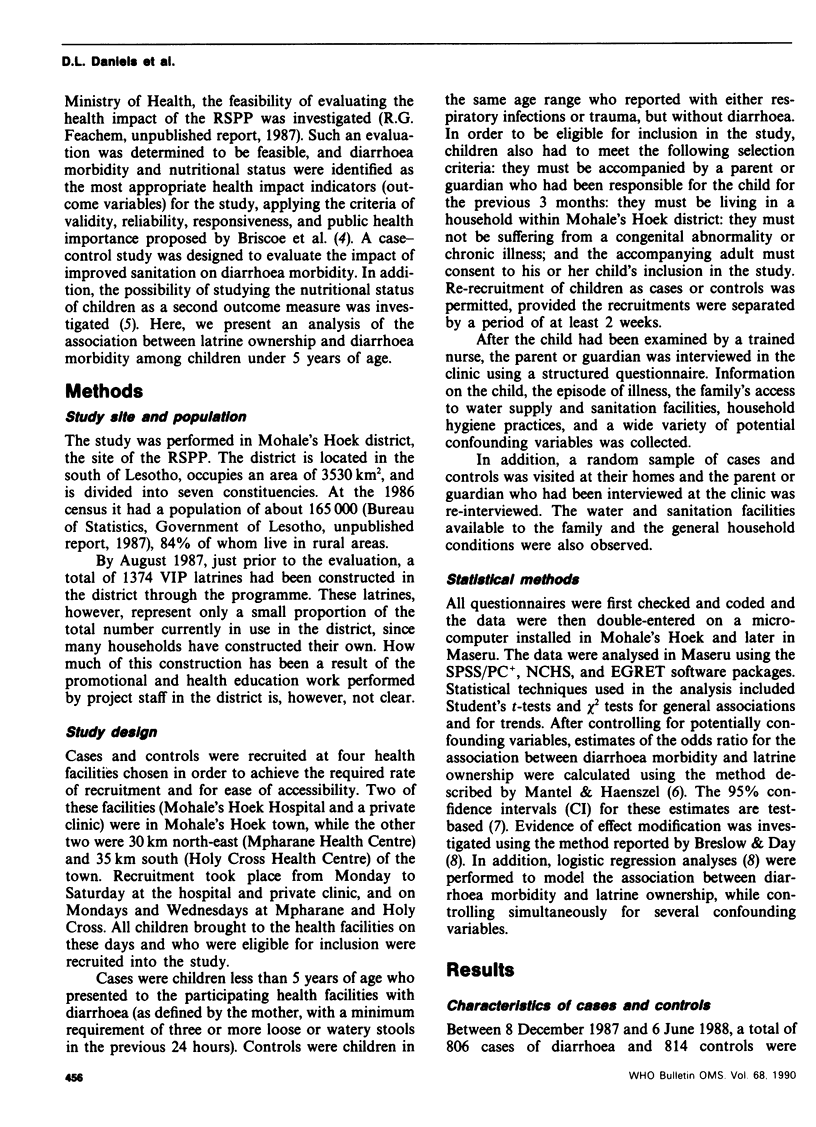
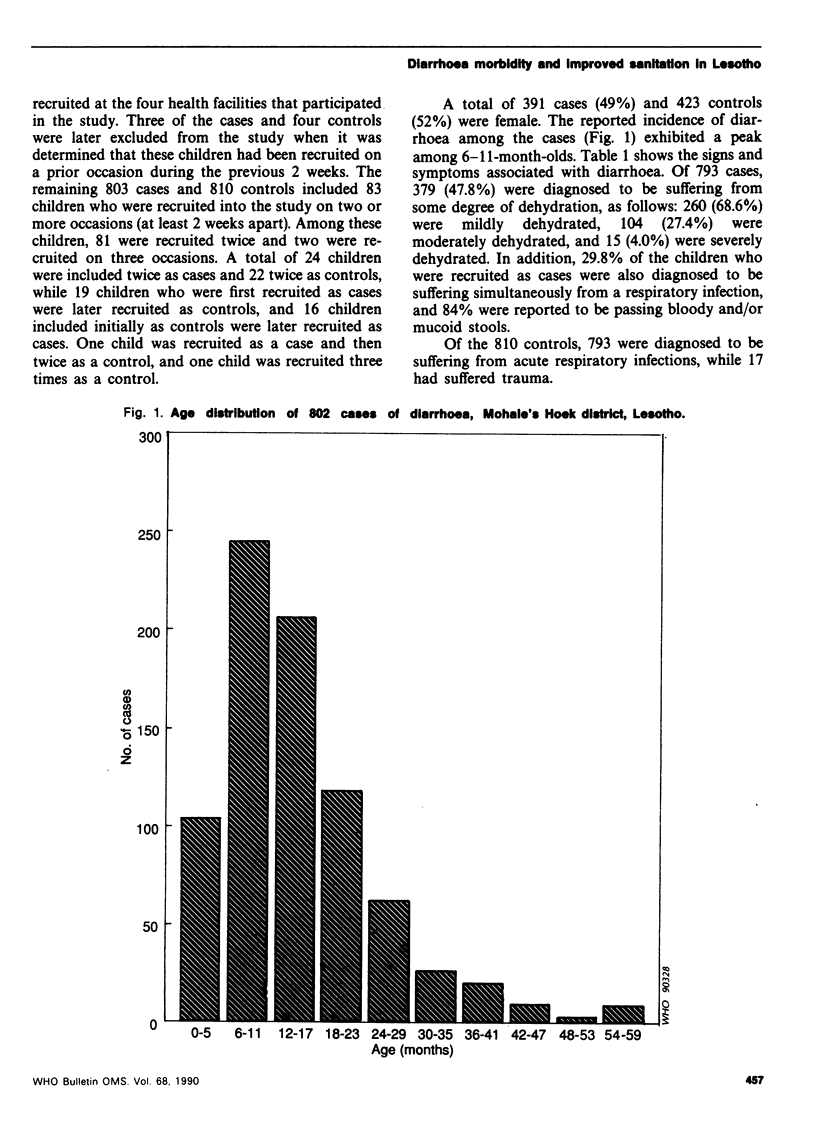
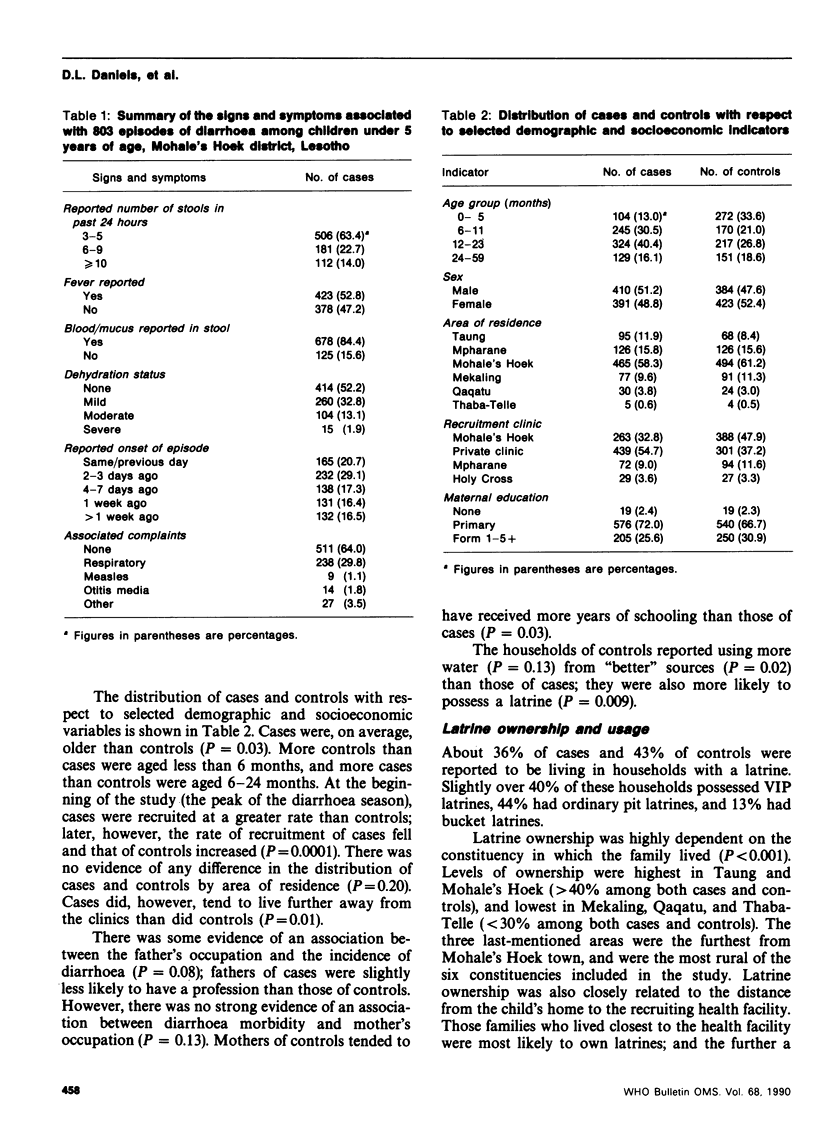
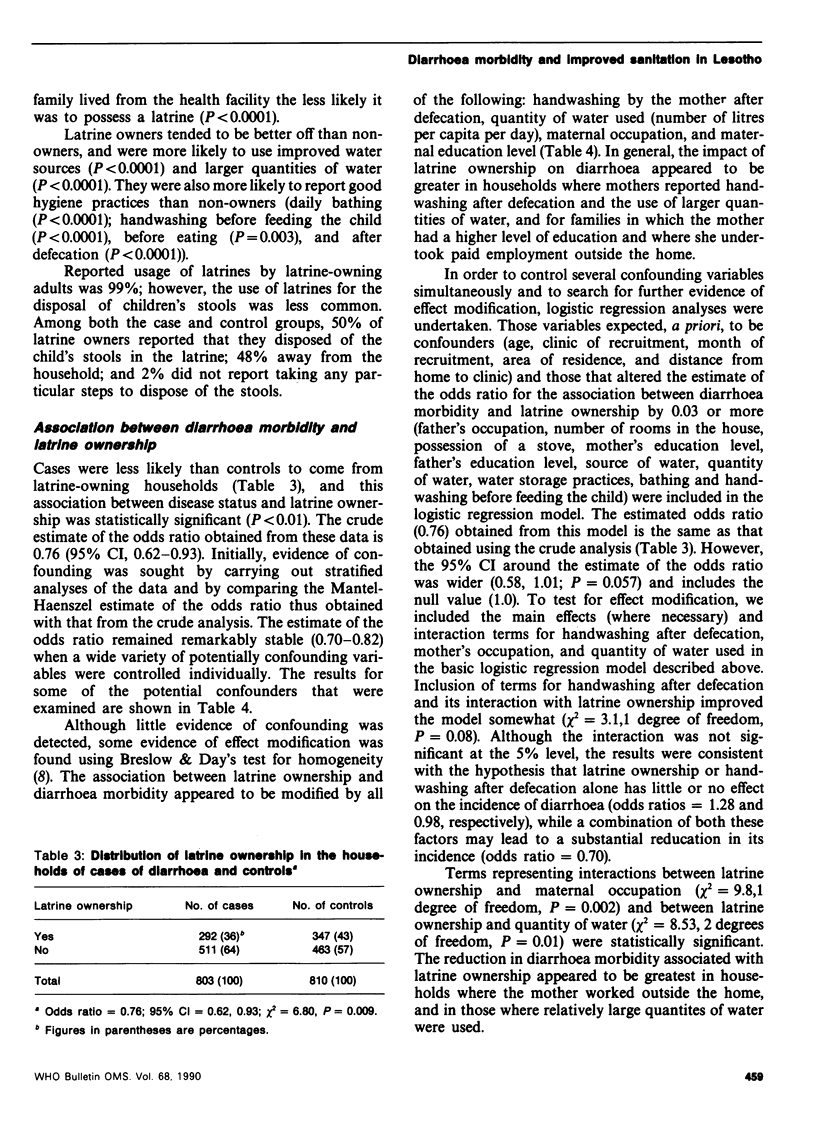
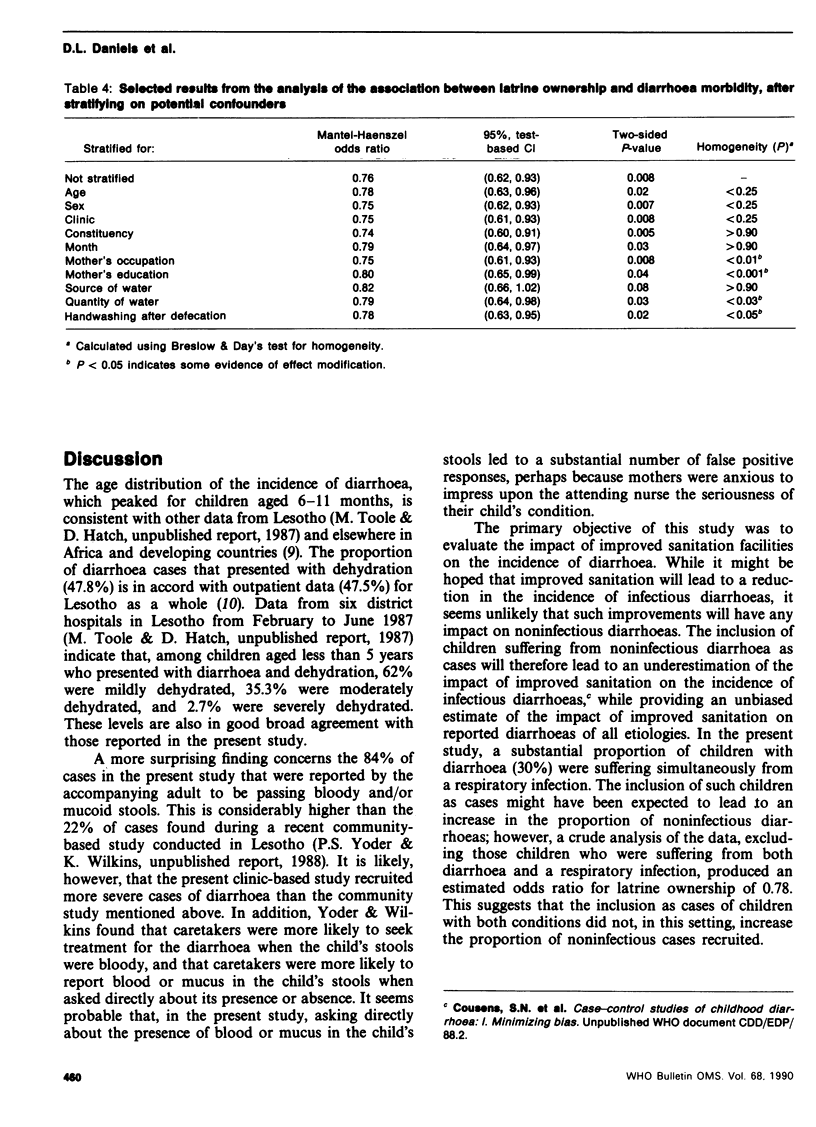



Selected References
These references are in PubMed. This may not be the complete list of references from this article.
- Baltazar J., Briscoe J., Mesola V., Moe C., Solon F., Vanderslice J., Young B. Can the case-control method be used to assess the impact of water supply and sanitation on diarrhoea? A study in the Philippines. Bull World Health Organ. 1988;66(5):627–635. [PMC free article] [PubMed] [Google Scholar]
- Blum D., Feachem R. G. Measuring the impact of water supply and sanitation investments on diarrhoeal diseases: problems of methodology. Int J Epidemiol. 1983 Sep;12(3):357–365. doi: 10.1093/ije/12.3.357. [DOI] [PubMed] [Google Scholar]
- Cousens S. N., Feachem R. G., Daniels D. L. The use of nutritional status as a second outcome measure in case-control studies of environmental risk factors for diarrhoeal diseases. Int J Epidemiol. 1989 Sep;18(3):701–704. doi: 10.1093/ije/18.3.701. [DOI] [PubMed] [Google Scholar]
- Esrey S. A., Collett J., Miliotis M. D., Koornhof H. J., Makhale P. The risk of infection from Giardia lamblia due to drinking water supply, use of water, and latrines among preschool children in rural Lesotho. Int J Epidemiol. 1989 Mar;18(1):248–253. doi: 10.1093/ije/18.1.248. [DOI] [PubMed] [Google Scholar]
- Esrey S. A., Feachem R. G., Hughes J. M. Interventions for the control of diarrhoeal diseases among young children: improving water supplies and excreta disposal facilities. Bull World Health Organ. 1985;63(4):757–772. [PMC free article] [PubMed] [Google Scholar]
- Esrey S. A., Habicht J. P. Maternal literacy modifies the effect of toilets and piped water on infant survival in Malaysia. Am J Epidemiol. 1988 May;127(5):1079–1087. doi: 10.1093/oxfordjournals.aje.a114884. [DOI] [PubMed] [Google Scholar]
- MANTEL N., HAENSZEL W. Statistical aspects of the analysis of data from retrospective studies of disease. J Natl Cancer Inst. 1959 Apr;22(4):719–748. [PubMed] [Google Scholar]
- Shuval H. I., Tilden R. L., Perry B. H., Grosse R. N. Effect of investments in water supply and sanitation on health status: a threshold-saturation theory. Bull World Health Organ. 1981;59(2):243–248. [PMC free article] [PubMed] [Google Scholar]
- Snyder J. D., Merson M. H. The magnitude of the global problem of acute diarrhoeal disease: a review of active surveillance data. Bull World Health Organ. 1982;60(4):605–613. [PMC free article] [PubMed] [Google Scholar]
- Victora C. G., Smith P. G., Vaughan J. P., Nobre L. C., Lombardi C., Teixeira A. M., Fuchs S. C., Moreira L. B., Gigante L. P., Barros F. C. Water supply, sanitation and housing in relation to the risk of infant mortality from diarrhoea. Int J Epidemiol. 1988 Sep;17(3):651–654. doi: 10.1093/ije/17.3.651. [DOI] [PubMed] [Google Scholar]
- Young B., Briscoe J. A case-control study of the effect of environmental sanitation on diarrhoea morbidity in Malawi. J Epidemiol Community Health. 1988 Mar;42(1):83–88. doi: 10.1136/jech.42.1.83. [DOI] [PMC free article] [PubMed] [Google Scholar]


